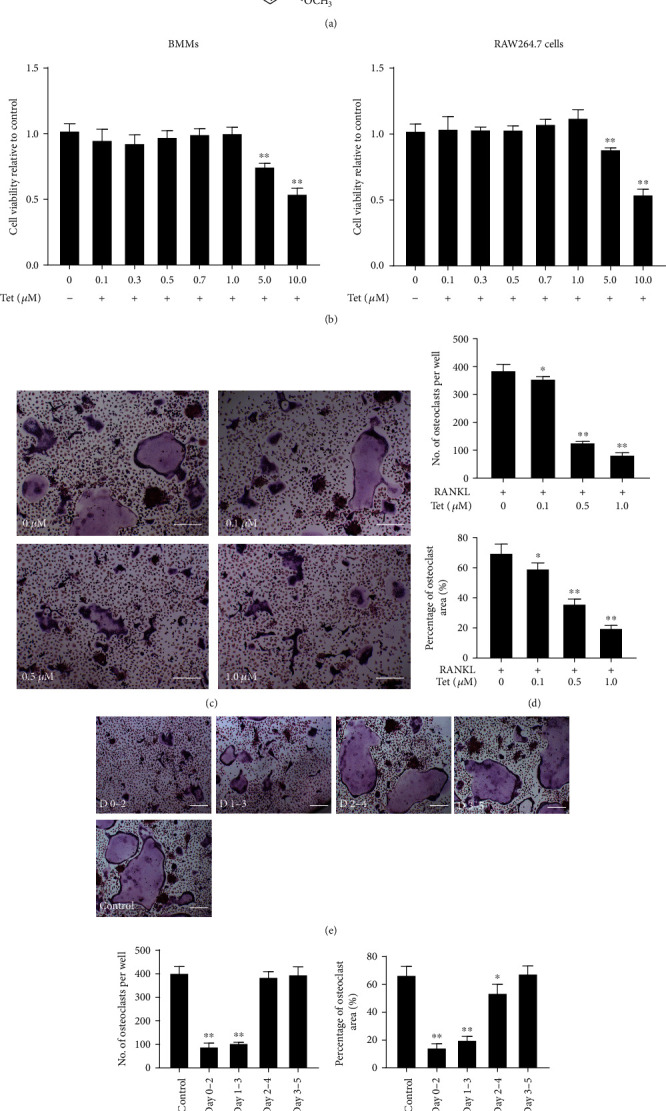Figure 4.

Tetrandrine (Tet) inhibits receptor activator for nuclear factor-κB ligand- (RANKL-) induced osteoclast formation and is not cytotoxic. (a) Chemical structure of Tet. (b) Bone marrow-derived macrophages (BMMs) and RAW264.7 cell viabilities were detected using the cell counting kit-8 (CCK-8) assay, and the results were normalized to the control group (without Tet treatment). (c) BMMs were stimulated with the indicated concentrations of Tet in osteoclast differentiation medium and then fixed and subjected to TRAP staining on day 5 (scale bar = 100 μm). (d) The number and area of osteoclasts. (e) BMMs were incubated in Dulbecco's modified Eagle's medium (DMEM) supplemented with M-CSF and RANKL, with Tet (1.0 μM) administered on days 0–2, 1–3, 2–4, or 3–5, and TRAP staining was performed to analyze osteoclast formation (scale bar = 100 μm). (f) The number and area of osteoclasts. All experiments were repeated three times (∗p < 0.05, ∗∗p < 0.01 compared with the control group; n = 5 per group). Data are the means of at least three independent experiments with similar results. TRAP: tartrate-resistant acid phosphatase; BMMs: bone marrow-derived macrophages; M-CSF: macrophage colony-stimulating factor.
